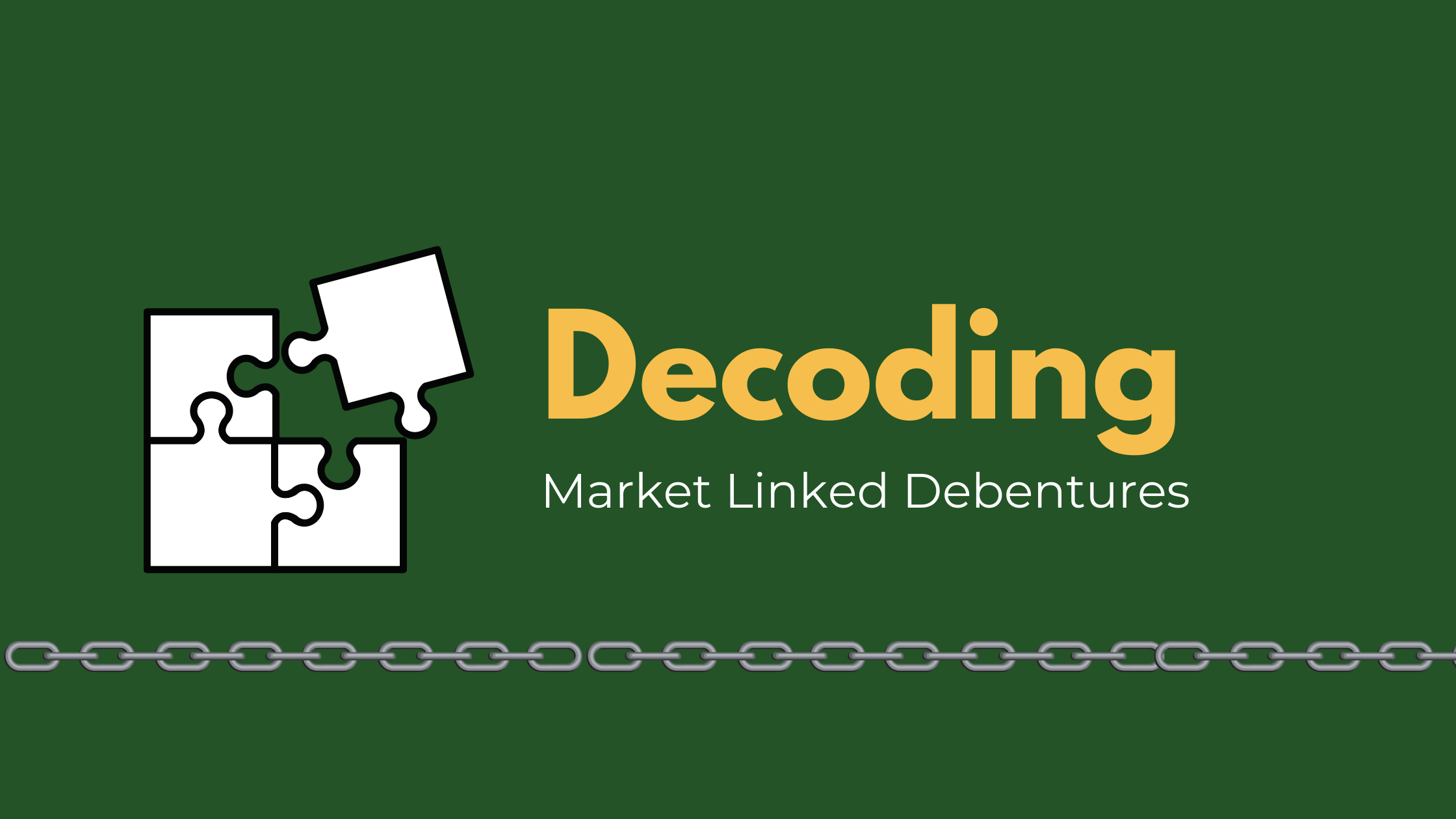MLD, or market linked debentures, have recently captured investors’ attention. They help many people reach their financial goals by integrating effectively with their portfolios. But to many, this can appear like another difficult investing option. Here, we dive deep into Market Linked Debentures to help you make an informed choice.
What is a Market Linked Debenture (MLD)?
Market-linked debentures, or MLDs, are governed by SEBI and have returns linked to investments in a particular security or market index (also known as the underlying index) such as government security, gold index fund, or Nifty Index fund, among others. The underlying instruments are picked based on the mandate and market performance, as stated in the scheme investment details. These structured fixed-income products only have one periodic payment at maturity. The funds’ holding period could be between one and five years. The principal and accrued returns are paid out upon maturity for these assets, and the returns are accrued. People are attracted to it due to its favourable tax treatment and often prefer it over tax-saving instruments like 54EC tax savings bonds.
Features of MLDs:
- The minimum investment in MLD is INR 10–25 Lakhs
- Typically, licenses are given out for one to five years
- Market regulation is carried out by SEBI (The Securities and Exchange Board of India)
- MLDs only make payments at maturity, in contrast to bonds, which do so at regular intervals with a fixed interest rate
- They may be listed or unlisted, secured or unsecured. Issuers can always buy these assets back.
- Because it serves a sophisticated investor base (generally HNIs or big corporates), it can be customisable
- Rated by independent credit rating agencies
Types of MLDs:
- Principal protected: It offers financial security to investors in the event of an accident and shields investors from the negative aspects of the underlying market sector. The capital or principal amount is guaranteed despite market turbulence. You might not get any returns if the market declines, but you will still get your money back, plus a market-linked coupon. If the market turns in your favour, you’ll probably make a similar amount.
- Non–principal protected: As the name suggests, these MLDs do not reimburse investors for their principal in the event of a loss or accident. Because the principal is not protected, investing in them is riskier.

Benefits of MLDs
- Hybrid exposure: It makes it possible for someone to gain from the growth of other markets without directly investing in them, like equity or government-bonds
- Countless Options: An investor can choose from a wide variety of issuers depending on their individual risk profile and tolerance
- Protection against risks: It guards against capital erosion and protects the investor’s principal investment from the decline of the underlying market.
- Great returns: Investors benefit similarly from it because it enables them to take advantage of a market’s improving performance and is tax-efficient, with taxable income at 10% plus surcharge and cess after a year of holding.
Risks of MLDs
- Market risk: Since the returns depend on a particular market index, they could be negatively impacted and fall below the predetermined levels in the event of unfavourable market conditions like a recession, domestic economic growth, inflation, foreign economic conditions, and so on.
- Credit risk: If a company performs poorly, it might not be able to pay back bondholders. Hence, the company’s financials and risk mitigation plan should be carefully reviewed.
- Liquidity risk: Due to the payoff being only available at the end of the tenure, getting interim liquidity is a challenge
- Complexity risk: MLDs are usually complex products and must be carefully reviewed to understand the underlying risks and asset classes.
How do MLDs work?
If a company issues MLD with a 10% annual coupon that matures in 16 months, the coupon is only paid if the index is not declined by more than 25%. Only the principal is paid if it collapses (principal-protected). The entire investment is lost in non-principal protected schemes.
Who can buy MLDs?
- Usually sold to High-Net-Worth Investors (HNIs)
Conclusion
MLDs are complex products that are advantageous to those aware of the dynamics, have a high-risk tolerance, and desire tax benefits.
A thorough understanding of the issuer’s underlying business, diversification, financial ratios, assigned credit rating, and other factors should be made before investing, as previously stated.





